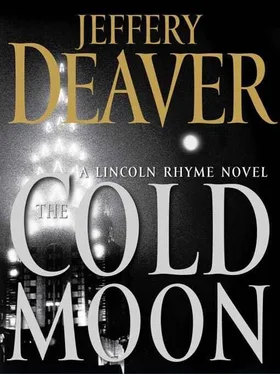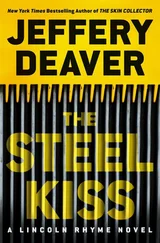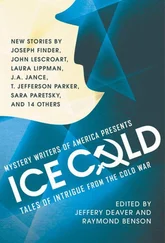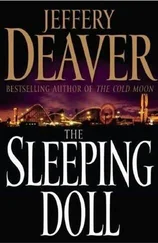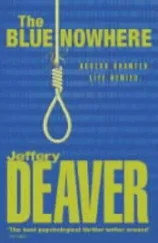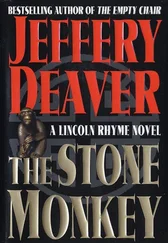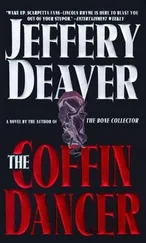Pulaski nodded. "Then see if they can tell us which store it was shipped to."
"One hundred percent," Rhyme said.
The rookie took out his phone, got the number from Cooper and dialed.
Of course, the killer might not have been the purchaser. He could've stolen them from a store. He could've stolen them from a residence. He could've bought them used at a garage sale.
But "could've" is a word that goes with the territory of crime scene work, Rhyme reflected.
You have to start somewhere.

THE WATCHMAKER
CRIME SCENE ONE
Location:
Repair pier in Hudson River, 22nd Street.
Victim:
Identity unknown.
Male.
Possibly middle-aged or older, and may have coronary condition (presence of anticoagulants in blood).
No other drugs, infection or disease in blood.
Coast Guard and ESU divers checking for body and evidence in New York Harbor.
Checking missing persons reports.
Perp:
See below.
M.O.:
Perp forced victim to hold on to deck, over water, cut fingers or wrists until he fell.
Time of attack: between 6 P.M. Monday and 6 A.M. Tuesday.
Evidence:
Blood type AB positive.
Fingernail torn, unpolished, wide.
Portion of chain-link fence cut with common wire cutters, untraceable.
Clock. See below.
Poem. See below.
Fingernail markings on deck.
No discernible trace, no fingerprints, no footprints, no tire tread marks.
CRIME SCENE TWO
Location:
Alley off Cedar Street, near Broadway, behind three commercial buildings (back doors closed at 8:30 to 10 P.M.) and one government administration building (back door closed at 6 P.M.).
Alley is a cul-de-sac. Fifteen feet wide by one hundred and four feet long, surfaced in cobblestones, body was fifteen feet from Cedar Street.
Victim:
Theodore Adams.
Lived in Battery Park.
Freelance copywriter.
No known enemies.
No warrants, state or federal.
Checking for a connection with buildings around alley. None found.
Perp:
The Watchmaker.
Male.
No database entries for the Watchmaker.
M.O.:
Dragged from vehicle to alley, where iron bar was suspended over him. Eventually crushed throat.
Awaiting medical examiner's report to confirm.
No evidence of sexual activity.
Time of death: approximately 10:15 P.M. to 11 P.M. Monday night. Medical examiner to confirm.
Evidence:
Clock.
No explosives, chemical- or bioagents.
Identical to clock at pier.
No fingerprints, minimal trace.
Arnold Products, Framingham, MA. Calling to find distributors and retailers.
Poem left by perp at both scenes.
Computer printer, generic paper, HP LaserJet ink.
Text:
The full Cold Moon is in the sky,
shining on the corpse of earth,
signifying the hour to die
and end the journey begun at birth.
– The Watchmaker
Not in any poetry databases; probably his own.
Cold Moon is lunar month, the month of death.
$60 in pocket, no serial number leads; prints negative.
Fine sand used as "obscuring agent." Sand was generic. Because he's returning to the scene?
Metal bar, 81 pounds, is needle-eye span. Not being used in construction across from the alleyway. No other source found.
Duct tape, generic, but cut precisely, unusual. Exactly the same lengths.
Thallium sulfate (rodent poison) found in sand.
Soil containing fish protein found inside victim's jacket.
Very little trace found.
Brown fibers, probably automotive carpeting.
Other:
Vehicle.
Probably Ford Explorer, about three years old. Brown carpet.
Review of license tags of cars in area Tuesday morning reveals no warrants. No tickets issued Monday night.
Checking with Vice about prostitutes, re: witness.
There's a good-old-boy network in urban government, a matrix of money, patronage and power extending like a steel cobweb everywhere, high and low, connecting politicos to civil servants to business associates to labor bosses to workers… It's endless.
New York City is no exception, of course, but the good-old-boy network Amelia Sachs found herself enmeshed in at the moment had one difference: a prime player was a good old girl.
The woman was in her midfifties, wearing a blue uniform with plenty of gingerbread on the front-commendations, ribbons, buttons, bars. An American flag pin, of course. (Like politicians, NYPD brass who appear in public have to wear the red, white and blue.) She had a pageboy cut of dull salt-and-pepper hair, framing a long, somber face.
Marilyn Flaherty was an inspector, one of the few women at this level in the department (the rank of inspector trumps captain). She was a senior officer in the Operations Division. This was a command that reported directly to the chief of department-the NYPD designation for police chief. Op Div had many functions, among them liaising with other organizations and agencies about major events in the city-planned ones, like dignitaries' visits, and unexpected, like terrorist attacks. Flaherty's most important role was being the police department's contact with City Hall.
Flaherty had come up through the ranks, like Sachs (coincidentally, both women had also grown up in adjacent Brooklyn neighborhoods). The inspector had worked in Patrol Services-walking a beat-then the Detective Bureau, then she'd run a precinct. Stern and brittle, thick and broad, she was a formidable woman in all ways, with the wherewithal-okay, the balls -to maneuver through the minefield a woman in the upper ranks of law enforcement faces.
To observe that she'd succeeded, you had only to glance at the wall and take note of the framed pictures of friends: city officials, union bosses and wealthy real estate developers and businessmen. One depicted her and a stately bald man sitting on the porch of a big beach house. Another showed her at the Metropolitan Opera, on the arm of a man Sachs recognized-a businessman as rich as Donald Trump. Another indicator of her success was the size of the One Police Plaza office in which they now sat; Flaherty somehow had landed a massive corner model with a view of the harbor, while all the command inspectors Sachs knew didn't have such nice digs.
Sachs was sitting opposite Flaherty, the inspector's expansive and polished desk between them. The other person present in the room was Robert Wallace, a deputy mayor. He sported a jowly, self-confident face and a head of silver hair sprayed into a politician's perfect coif.
"You're Herman Sachs's daughter," Flaherty said. Without waiting for a response she looked at Wallace. "Patrolman. Good man. I was at the ceremony where they gave him that commendation."
Sachs's father had been given a number of commendations over the years. She wondered which one this had been for. The time he talked a drunken husband into giving up the knife he was holding to his wife's throat? The time he went through a plate-glass window, disarming a robber in a convenience store while he was off duty? The time he delivered a baby in the Rialto theater, with Steve McQueen fighting bad guys up on the silver screen while the Latina mother lay on the popcorn-littered floor, grunting in her rigorous labor?
Wallace asked, "What's this all about? We understand there might be some crimes police officers're involved in?"
Flaherty turned her steel gray eyes to Sachs and nodded.
Go.
"It's possible… We have a drug situation. And a suspicious death."
"Okay," Wallace said, stretching the syllables out with a sigh and wincing. The former Long Island businessman, now on the mayor's senior staff, served as special commissioner to root out corruption in city government. He'd been ruthlessly efficient at the job; in the past year alone he'd closed up major fraud schemes among building inspectors and teachers' union officials. He was clearly troubled at the thought of crooked cops.
Читать дальше
